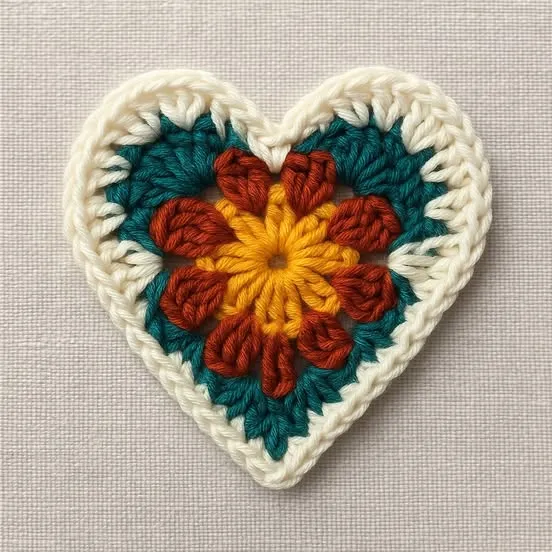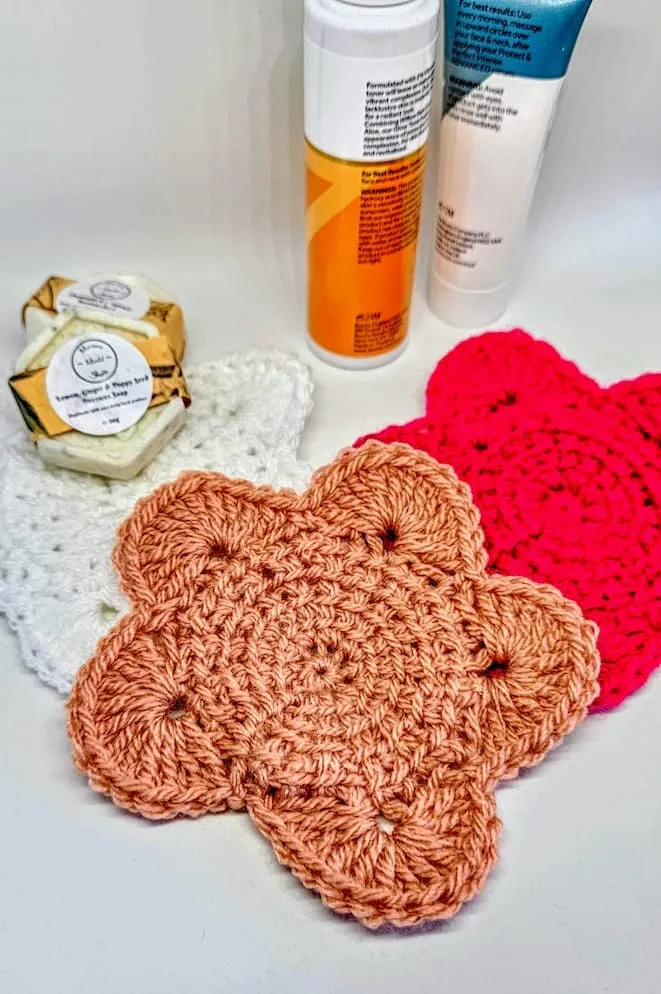
The Tunisian Crochet Flower – Free Pattern is a creative and versatile project perfect for crafters of all levels. This unique crochet technique allows you to create flowers that are both structured and delicate, ideal for home decor, accessories, or personalized gifts.
Tunisian crochet, sometimes called Afghan crochet, combines elements of knitting and traditional crochet, producing a beautiful, dense fabric that holds its shape exceptionally well.
Making a Tunisian Crochet Flower is not only fun but also a great way to expand your crochet skills. By following this free pattern, you’ll learn how to combine simple stitches into intricate-looking motifs that are surprisingly easy to execute. Each flower can be used individually or combined to make garlands, appliqués, cushions, or even brooches.

The Tunisian Crochet Flower – Free Pattern is also highly customizable. You can select different yarn colors, textures, and hook sizes to create a variety of effects.
Whether you want small, delicate flowers for embellishments or larger, statement pieces for a blanket or wall hanging, this pattern adapts beautifully to any project.
The magic of the Tunisian Crochet Flower – Free Pattern lies in the Tunisian stitch. Unlike standard crochet, Tunisian crochet uses a long hook to hold multiple loops at once, creating a fabric that is both dense and textured. This gives the flowers stability while keeping them soft and pliable.
Each Tunisian crochet flower begins with a forward pass, where loops are picked up across the row, and a return pass, where loops are worked off the hook. This two-step process gives each petal a woven appearance, adding depth and dimension.
Using an Afghan hook is traditional, but for small projects like flowers, a standard crochet hook works well. The important part is to maintain consistent tension so that each petal looks uniform. Uneven tension can cause petals to curl or stretch.
The Tunisian Crochet Flower uses a combination of stitches to form the petals, typically starting with a base chain, then building height with Tunisian simple stitches and sometimes incorporating increases and decreases for shaping. Each petal curves naturally, giving the flower a realistic appearance.
This technique also works beautifully with color changes. You can create single-color flowers or experiment with variegated or gradient yarns to produce stunning effects. The structure of Tunisian crochet helps the colors blend smoothly, giving the finished flower a professional look.
Finally, the Tunisian crochet method ensures durability. Unlike delicate lace crochet, these flowers maintain their shape over time, making them suitable for frequent use, such as decorating hats, bags, or even home textiles.
To make your Tunisian Crochet Flower – Free Pattern, start by choosing your yarn and hook. Cotton or acrylic yarns in light or medium weight are ideal for this project. A hook slightly larger than recommended helps prevent tight stitches and makes the petals lie flat.
Step 1: Create a slip knot and chain six. This chain will serve as the center of your flower. Work a Tunisian simple stitch into each chain across, picking up loops onto the hook. At the end of the row, perform the return pass to secure the loops.
Step 2: Repeat the forward and return pass for several rows to create a rectangular petal. The number of rows will determine the height of each petal. For small flowers, three to four rows may suffice, while larger flowers may need six to eight rows.
Step 3: Shape the petal by decreasing stitches at the edges. Skip the first or last stitch of each row to taper the petal, giving it a natural pointed shape.
Step 4: Make five or six petals using the same method. You can use the same color for a uniform flower or different colors for a more playful, multicolor effect.
Step 5: Assemble the petals by sewing them together in a circular formation. Add a small crocheted circle or a button to the center of the flower for a finished look. This not only strengthens the flower but also adds a decorative touch.
Step 6: Once assembled, gently block your flower to enhance the shape of the petals. Pin them in place and lightly spray with water, allowing them to dry flat. Blocking ensures each petal opens fully and the flower looks polished.
To achieve the best results with the Tunisian Crochet Flower – Free Pattern, maintain even tension throughout your work. Loose loops may cause petals to droop, while tight loops may make the flower stiff.
Choose yarn with good stitch definition to make the texture of Tunisian stitches stand out. Smooth cotton and acrylic blends are excellent for showcasing the ridges and weave of the petals.
Experiment with hook sizes. A slightly larger hook creates a softer, more open flower, while a smaller hook produces defined, sculptural petals. Both approaches work beautifully depending on your project.
Use stitch markers to keep track of rows and petals. This helps maintain consistency, especially when making multiple flowers for a larger project.
Color placement is crucial for visual impact. Consider using contrasting colors for the petals and center to make the flower pop, or opt for gradient yarns to create a subtle ombré effect.
Finally, consider adding embellishments such as beads, sequins, or embroidered centers. These small details elevate the Tunisian Crochet Flower and make it perfect for gifts or decorative accents.
The Tunisian Crochet Flower – Free Pattern is highly versatile and can be used in numerous creative projects. Attach flowers to headbands or hats for a charming accessory. Sew them onto bags or purses to add a handmade touch.
Create a bouquet of crochet flowers to use as home decor or gifts. Combine multiple flowers with leaves and stems to make a realistic, long-lasting arrangement.
Use these flowers as appliqués on blankets, pillowcases, or table runners. They add texture, color, and dimension, turning ordinary items into statement pieces.
Combine different sizes of flowers for a layered effect. Small and large flowers together create a dynamic composition that looks professional and artistic.
Consider making seasonal variations. Pastel colors for spring, bright shades for summer, or rich, warm tones for autumn can give your crochet flowers a fresh, festive appeal.
Finally, these flowers can even be used in wearable art. Attach them to scarves, sweaters, or brooches to personalize clothing items and showcase your crochet skills.
Q: Is this Tunisian Crochet Flower pattern suitable for beginners?
A: Yes! While Tunisian crochet may be new to some, the pattern uses simple stitches and is easy to follow with practice.
Q: What yarn works best for this flower?
A: Lightweight cotton or acrylic yarn is ideal. It provides structure and keeps the petals soft.
Q: How many petals are needed for each flower?
A: Five to six petals are recommended, but you can make more or fewer depending on your desired flower size.
Q: Can I make multi-colored flowers?
A: Absolutely. Use different yarn colors for petals and centers, or experiment with variegated yarns for beautiful effects.
Q: How do I attach the petals together?
A: Sew the petals in a circular formation and secure the center with a crocheted circle or button for stability.
Q: Can these flowers be used for home decor?
A: Yes. They are perfect for embellishing cushions, blankets, table runners, or wall hangings.
Q: How do I maintain the shape of the flowers?
A: Blocking is essential. Pin the petals in shape and lightly spray with water, allowing them to dry flat.
Q: Can I make these flowers into wearable accessories?
A: Yes. They work well as brooches, hair accessories, or even decorative elements on scarves and hats.
The Tunisian Crochet Flower – Free Pattern is a beautiful, versatile project that combines the unique structure of Tunisian crochet with the charm of floral design. By following the step-by-step instructions, you can create flowers that are elegant, durable, and perfect for a variety of projects.
This pattern encourages creativity, whether you are experimenting with colors, sizes, or embellishments. It’s ideal for beginners looking to learn Tunisian crochet or experienced crafters seeking a decorative addition to their handmade items.
